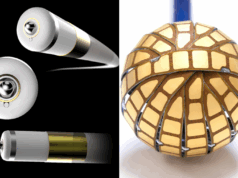A study published in the August Journal of Nuclear Medicine (JNM) by a team of researchers from Sapporo University, Japan, finds that molecular imaging – a non-invasive imaging procedure – can identify high-risk patients with potentially life-threatening cardiovascular conditions, from arrhythmia and coronary artery disease to heart failure.
One of the study’s authors also believes the procedure can help physicians determine which patients are best suited for implantable cardioverter defibrillator (ICD) therapy. Kimio Nishisato, Muroram City General Hospital, says “if the molecular imaging techniques are used for appropriate selection of ICD candidates, not only overuse but also underuse of ICD could be avoided and the assessment may be shown to be more cost-effective.”
The study is the first of its kind to show the efficacies of a method for more accurate identification of patients at greater risk of lethal arrhythmias and sudden cardiac death and its findings hold significant potential for the detection, diagnosis and treatment of many common cardiovascular conditions, believes Tomoaki Nakata, an associate professor at the Sapporo Medical University School of Medicine and director of the Hokkaido Prefectural Esashi Hospital. “With molecular imaging, physicians can improve patient care by pinpointing the precise location of the disease in order to eliminate the need for invasive medical devices and unnecessary surgical techniques.” Nakata adds that molecular imaging can also reduce unnecessary medical costs by better targeting treatment for each individual patient.
SCD is often the first manifestation of an underlying disease – but one that current treatments such as ICD cannot always detect. Molecular imaging is a procedure that holds promise in helping physicians to guide diagnosis and treatment as well as avoiding unnecessary ICD treatment.
Ichiro Matsunari, director of the clinical research department at the Medical & Pharmacological Research Centre Foundation in Hakui, and author of an invited perspective published in same journal, also highlights the need for more precise strategies such as the molecular imaging technique to identify high-risk patients for SCD who are most likely to benefit from ICD therapy. “While implantable cardioverter defibrillator therapy is an effective option over anti-arrhythmic medications to prevent SCD, the balance of clinical benefits, efficacy and risks is still a matter of discussion.”









